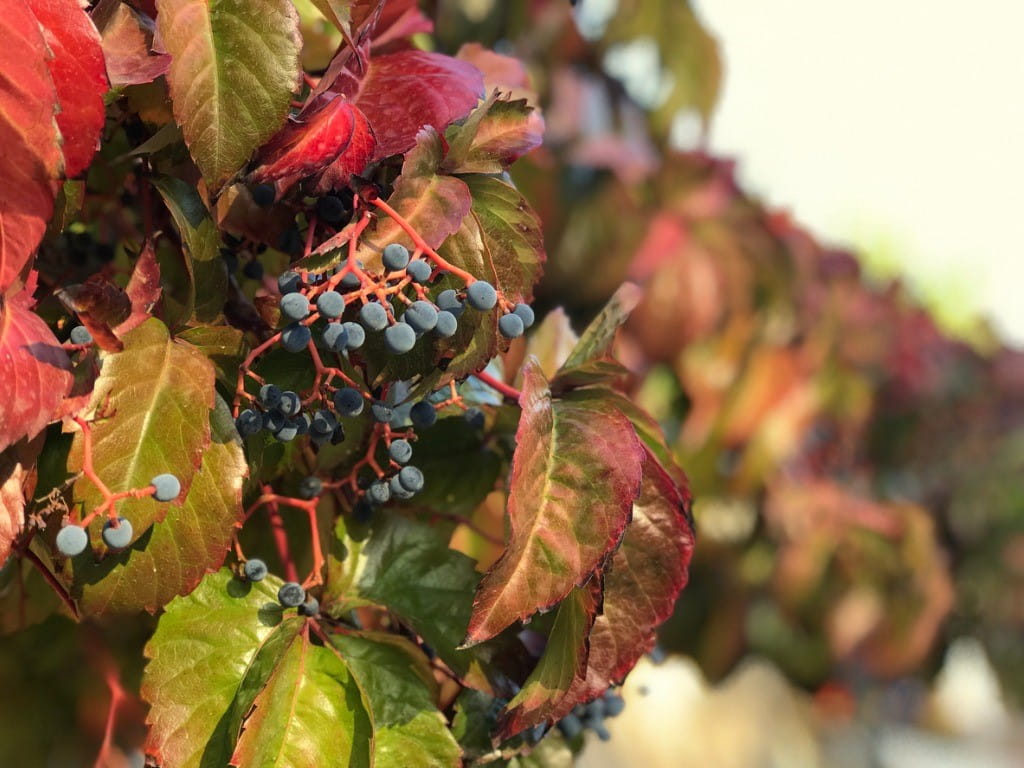Virginia Creeper and Wisteria Toxicity Pretty But Poisonous

The Bottom Line
Although they are pretty, Virginia creeper and wisteria can be harmful if they are chewed or swallowed. Both plants can cause mouth pain, nausea, vomiting, and diarrhea and should not be eaten.

The Full Story
Virginia creeper is a decorative ivy native to eastern and central North America. It has small leaves, or leaflets, that grow in groups of five. It is sometimes confused with poison ivy, which has leaflets that grow in groups of three. Luckily, Virginia creeper doesn't contain a rash-causing oil like poison ivy. If you have trouble remembering which plant is which just tell yourself, "leaves of three, let it be; leaves of five, let it thrive!"
Virginia creeper isn't completely poison-free; its berries and leaves can be harmful. The berries of the Virginia creeper resemble purple grapes and contain tiny crystals called oxalate crystals. These crystals are also in the leaves of Virginia creeper. If the leaves or berries are chewed they can cause irritation to the lips, mouth, tongue, and throat. Although rare, nausea, vomiting, diarrhea, and difficulty swallowing have been reported after swallowing plants with oxalate crystals. The symptoms generally develop quickly and can last for up to half a day.
Wisteria is a climbing vine that produces clusters of hanging, fragrant, blue or purple flowers. Wisteria seeds are contained in hanging, velvety seed pods. The seed pods and seeds are considered the most toxic parts of the plant, but all parts contain the harmful chemicals lectin and wisterin, which can cause a burning sensation in the mouth, stomach pain, vomiting, and diarrhea if swallowed. These symptoms can last for up to 2 days once they develop.
If someone is unintentionally exposed to Virginia creeper or wisteria, you can help them by following these steps:
- Gently wipe out their mouth.
- Have them rinse with water and spit to remove plant material from their mouth.
- They can drink a few small sips of water to rinse the remaining material into their stomach.
- If their mouth is irritated, sucking on ice chips or frozen treats might relieve pain.
- If they are experiencing nausea or vomiting, keep them hydrated with frequent small sips of clear fluids.
If you suspect someone has been exposed to Virginia creeper or wisteria and is having a problem, check the webPOISONCONTROL® online tool for guidance or call Poison Control at 1-800-222-1222.
Lindsy Liu, PharmD
Certified Specialist in Poison Information
Poisoned?
Call 1-800-222-1222 or
Prevention Tips
- Identify all plants in your home and yard before an exposure happens.
- When handling Virginia creeper, cover as much skin as you can to limit skin exposure to oxalate crystals.
- Let your children know that no part of a plant should be eaten.
This Really Happened
Case 1. A 3-year-old girl was found chewing on berries from a Virginia creeper. She spit them out and she had her mouth rinsed out and was given a snack. She did not develop any symptoms.
Case 2. In a contest to see who could eat the most wisteria seeds, twin 13-year-old boys ate wisteria seed pods, flowers, and seeds from a wisteria plant in a friend's yard. Within 30 minutes they experienced vomiting, dry heaving, and excessive sweating. They were admitted to a hospital and treated with anti-nausea medication and intravenous fluids. Overnight, they continued to experience vomiting and diarrhea. They both recovered about a day after the exposure.
For More Information
References
Poisoned?
Call 1-800-222-1222 or
Prevention Tips
- Identify all plants in your home and yard before an exposure happens.
- When handling Virginia creeper, cover as much skin as you can to limit skin exposure to oxalate crystals.
- Let your children know that no part of a plant should be eaten.
This Really Happened
Case 1. A 3-year-old girl was found chewing on berries from a Virginia creeper. She spit them out and she had her mouth rinsed out and was given a snack. She did not develop any symptoms.
Case 2. In a contest to see who could eat the most wisteria seeds, twin 13-year-old boys ate wisteria seed pods, flowers, and seeds from a wisteria plant in a friend's yard. Within 30 minutes they experienced vomiting, dry heaving, and excessive sweating. They were admitted to a hospital and treated with anti-nausea medication and intravenous fluids. Overnight, they continued to experience vomiting and diarrhea. They both recovered about a day after the exposure.
